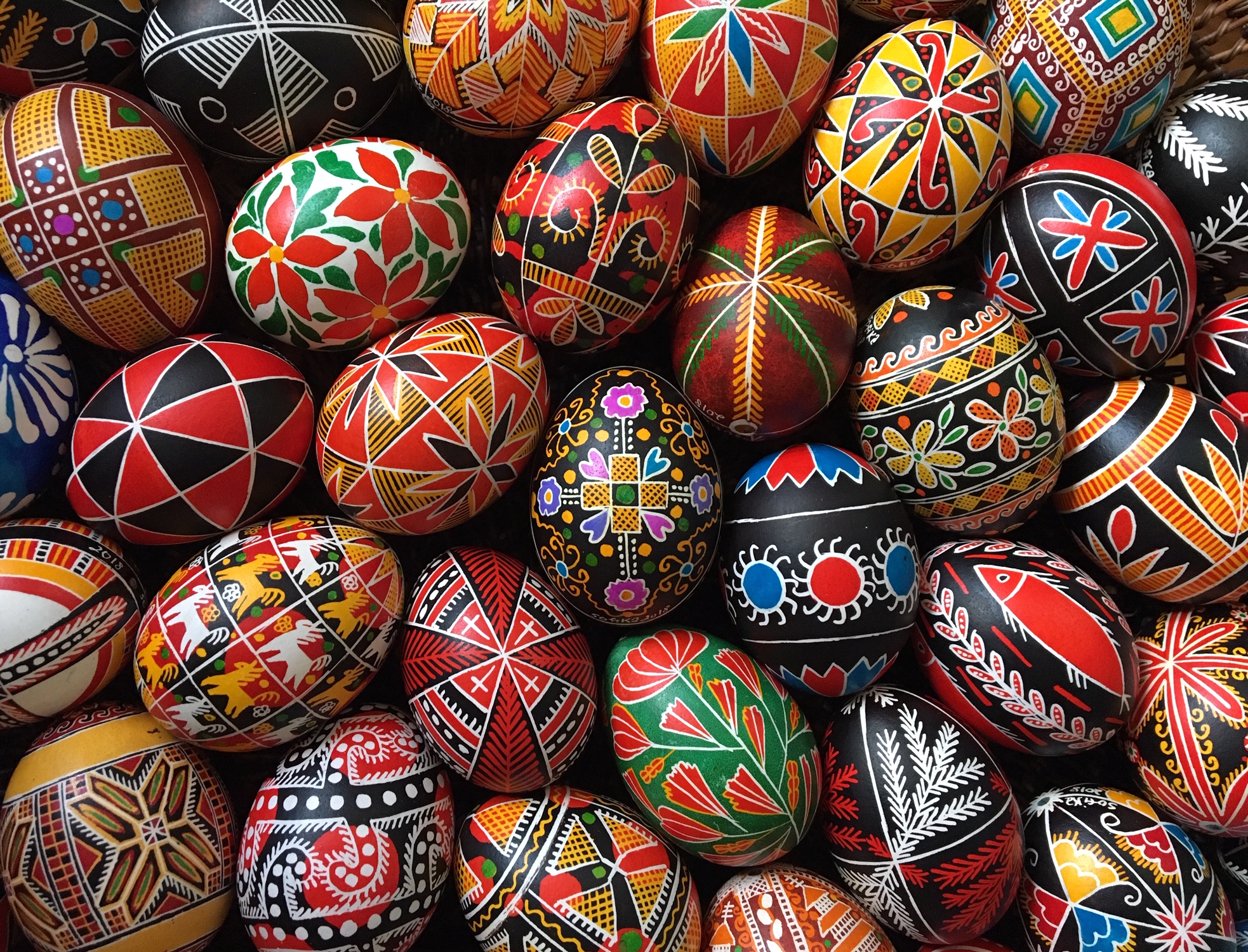My Ukrainian grandmother had a bowl of eggs that would come out every spring and sit proudly in the centre of her dining room table. These eggs were bright and colourful, and they were covered in intricate patterns and designs. They were beautiful, and I spent hours looking at them, memorizing every dot and line. When I was old enough to try making my own, I was always frustrated by the fact that my eggs were never as beautiful as the ones in that bowl. It’s been over a decade since I last saw that bowl full of eggs, but I still think of them every year at Easter.
I should point out that while most of the Christian world is celebrating Easter today, Ukrainian Easter is not until next Sunday. This is because Orthodox Christians use the Julian calendar to determine their holidays, not the Gregorian calendar like the Catholic Church. But in preparation for next Sunday, I wanted to know more about the eggs that fascinated me as a child. In particular, I wanted to know more about the cultural importance of Ukrainian Easter eggs, known as pysanka. As it turns out, they are incredibly important.
Pysanka are created by writing the designs onto the eggs with beeswax. The first design is written onto the clean shell using a stylus called a kistka. The egg is then dyed yellow all over and the next design is written. The eggs is then dyed in red, and the process is repeated with as many colours as desired, moving from light to dark. When the last colour is finished, the beeswax is melted off of the egg, revealing the full pattern underneath. For every layer, the wax preserves the colour underneath, so you don’t see the final product until the very end. At that point, the eggs are varnished, and they are prepared to be given away as gifts to family, friends, and members of the community.
I loved these eggs as a child, but this past week I finally learned just how important they are to Ukrainian culture. Pysanka date back to pre-Christian times when they were made to celebrate the re-birth of life every spring. Christianity adopted the practice for Easter celebrations to symbolize the resurrection of Christ, but for centuries, pysanka occupied a special place in Ukrainian folk lore. They were seen as talismans against evil spirits and catastrophes. The more colourful the pysanka, the more luck and strength they held. And some stories told about how the more pysanka there were in the world, the more the chains keeping evil at bay would be strengthened.
What’s interesting is that every family, village, and/or region has their own designs that are closely guarded secrets. These designs have been passed down from generation to generation, often from mother to daughter, and it is traditionally the Thursday before Easter that families make the year’s pysanka. I also learned that there are a lot of superstitions associated with pysanka. For example, women should never give their male partners pysanka with no colours on the top or bottom of the eggs, because this means the men will go bald!
Pysanka, like most Ukrainian cultural heritage, were prohibited in Ukraine during Soviet rule. However, many families would still make these eggs in secret at night. The practice also flourished throughout the Ukrainian diaspora; my grandmother’s eggs a perfect example. Since Ukraine’s independence in 1991, the tradition of pysanka has been revived, and I hope it will continue to flourish for centuries to come. They will be made under horrific circumstances this year, but I’d like to believe that every pysanka that is made will rid the world of some evil. One can only hope.
It has been a very long time since I last made a pysanka, but this year I’m going to give it a go. Hopefully this will be the beginning of a tradition that will last a lifetime. I know I’ll never be able to make a pysanka as beautiful as my grandmother’s. But I can’t think of a better way to spend next weekend.
One final note. I discovered that it’s possible to buy pysanka sleeves of pre-made designs that can be adhered to eggs in seconds. These sleeves are called linyvky, which is Ukrainian for lazy. I love Ukraine.
Suggestions for artists I should check out? Please contact me with your ideas. I hope you enjoyed your daily helping of art!



